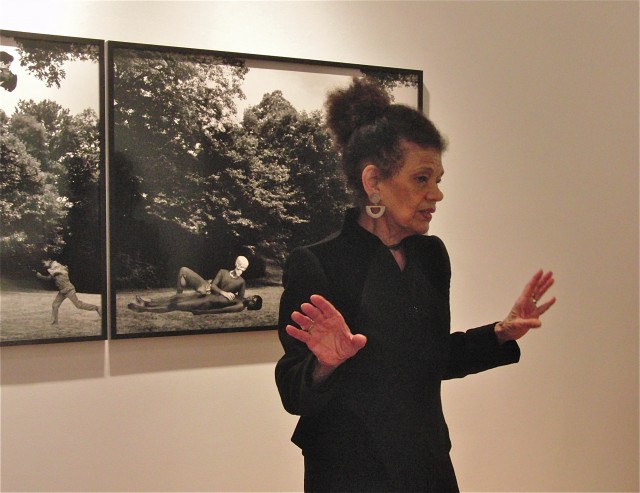Alexander Gray Associates
508 West 26th St. between Tenth & Eleventh Aves., #215
Tuesday – Saturday through May 25, free
212-399-2636
www.alexandergray.com
lorraineogrady.com
For more than thirty years, Lorraine O’Grady has been exploring the African diaspora and the African American art world itself through such multidisciplinary exhibitions, series, and performances as “Mlle Bourgeoise Noire,” “Miscegenated Family Album,” and “Flowers of Evil and Good.” In her seminal 1990s text “Olympia’s Maid: Reclaiming Black Female Subjectivity,” the Boston-born, Manhattan-based visual artist wrote, “What happened to the girl who was abducted from her village, then shipped here in chains? What happened to her descendants? . . . Perhaps they have internalized and are cooperating with the West’s construction of not-white women as not-to-be-seen.” The African American body is central to her latest exhibition, “New Worlds,” on view at Alexander Gray Associates through May 25. The centerpiece of the show is the nineteen-minute video Landscape (Western Hemisphere), which consists of extreme close-ups of O’Grady’s hair, accompanied by a soundtrack that includes rustling wind and animal noises. The abstract images are mesmerizing, impossible to identify on their own, a combination of beauty, mystery, and fear. Landscape (Western Hemisphere) is joined by a pair of revisited photomontages from O’Grady’s 1991 “BodyGround” series. In “The Fir-Palm,” a hybrid Caribbean palm / New England fir rises out of the body of a naked black woman, representative of O’Grady herself, whose parents were West Indian. O’Grady gets overtly political in the diptych “Body/Ground (The Clearing: or Cortez and La Malinche. Thomas Jefferson and Sally Hemings, N. and Me),” which depicts, on the left, a white man and a black woman making love as they float above the Clearing at O’Grady’s alma mater, Wellesley, with two children playiing beneath them, while on the right a clothed man with a skeleton head sexually touches a naked black woman feigning death. It’s a powerful image about slavery, colonialism, interracial relationships, and one of O’Grady’s core concerns, hybridity. “In The Strange Taxi: From Africa to Jamaica to Boston in 200 Years, where the subject was hybridism itself, my literal ancestresses, who to some may have looked white, sprouted from a European mansion rolling on wheels down the African woman’s back,” O’Grady wrote in “Olympia’s Maid.” “Although they may have been controversial, I liked the questions those beautifully dressed, proudly erect, ca. World War I women raised, not least of which was how the products of rape could be so self-confident, so poised.” Those issues and more are explored in this fascinating show.
